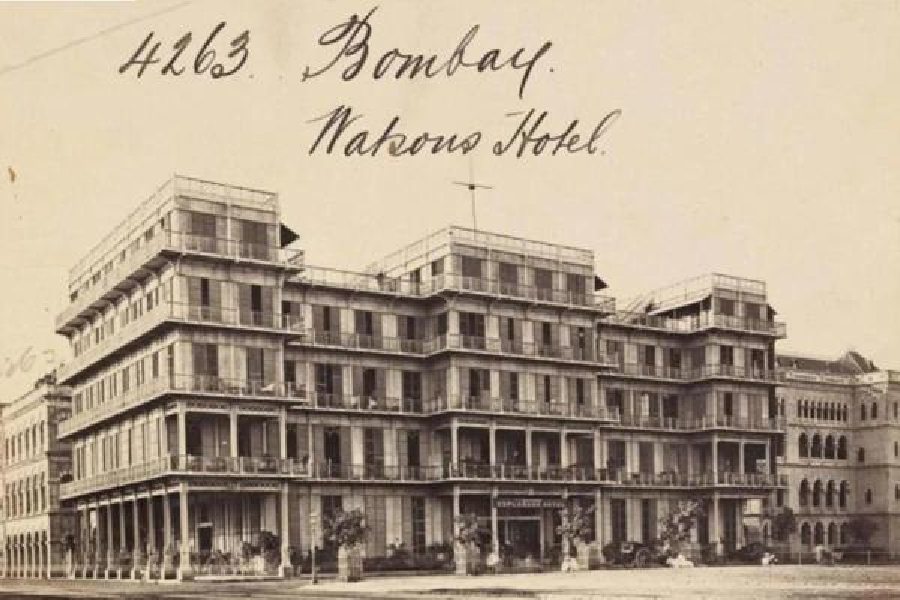Book: The Kidnapping of Mark Twain
Author: Anuradha Kumar
Published by: Speaking Tiger
Price: Rs 499
Anuradha Kumar’s 11th novel is a dense, astute, intricate, lucid, and well-researched work in the genre of detective fiction and cannot be dismissed as a potboiler despite its sensational title. Set in Bombay of the late 19th century, the book begins with the news of the horrific murder of a 12-year-old girl named Casi. The first and usual suspect is Tuka Ram, the husband, who is a labour supervisor and contractor for several mills in the city. He happens to be a close associate of Bal Gangadhar Tilak. Casi was Tuka Ram’s second wife. Neither a deflection nor a distraction from the main character of our story — Mark Twain — Casi’s death gradually proves to be critical in peeling off other mysteries that are hidden in colonial and cosmopolitan Bombay.
Fact and fiction blend beautifully as Kumar reimagines the American writer’s visit to and stay in Bombay’s famous Watson’s Hotel. Owing to poor investment decisions, Twain finds himself on a tour of the world in quest for stories of adventure, fantasy, and humour. Bombay, somehow, has not yet woken up to the literary genius of the man that is Samuel Langhorne Clemens, aka Mark Twain. For Henry Baker, the American Consul, though, this cannot be a valid reason to not ensure his fellow countryman’s safety in a city bustling with a motley crew comprising jewel thieves, murderers, mill and factory workers on strike, Russian spies, a sorrowful Serbian violinist, a magician on stilts, a probable hypnotist who is on a mission to cleanse the city of its two vices – opium and prostitution – and a German filmmaker who frequents cemeteries at the dead of the night and complains of too much noise. Added to this list of probable suspects is a lurking threat of cholera as well as early signs of the bubonic plague.
Kumar’s extraordinary skill to build up a sense of foreboding about what is to follow lies in the way the atmospherics are created. The morning after a party at Cowasjee Bengalee’s mansion, there is visible commotion at Watson’s Hotel. The “Amrikan” has vanished without anyone having a clue of his whereabouts, including his wife, Olivia, and daughter, Clara. Too much happens in this story around Twain’s kidnapping and the reader is not allowed even a blink of rest lest a red herring is mistaken for circumstantial evidence. Not only is the author meticulous in presenting even the most trivial of details but the reader is also expected to be attentive and thoroughly committed to the unravelling of a unique mystery.
Meanwhile, staying at Byculla Club, Henry Baker is barely six months old in the city and trying to ‘fit in’*, much like Maya Barton, an enigma herself, who is rumoured to be the daughter of Reverend Charles Barton who headed the Indian Church Mission in Lahore. Perceived through Baker’s male gaze, Maya is a puzzle he doesn’t wish to solve as much as he would like to be entangled by it. Maya and her disguises disconcert Baker who doesn’t approve of her unconventional ways of getting to the truth. Maya’s calm disposition as against Henry’s hasty and panic-driven responses stands out in the manner both approach the urgent task at hand — Mark Twain’s unharmed return.
If read closely, Casi’s murder emerges as a far more pressing issue than Twain’s alleged abduction. While Casi’s case is emblematic of the deplorable socio-economic condition of the wives of migrant workers in Bombay, Mark Twain’s high-profile visit is an antithesis to the reality of the working class. The nexus among politicians, businessmen, labour union leaders, and government officials is cleverly insinuated in the novel, thereby prodding the readers to detect and identify the loopholes and the main culprit in the system. Twain’s disappearance is, in fact, an excuse to expose the real criminals and uncover corruption in society.










